
The name Jonsbo stands for a world-renowned manufacturer of computer components from China. In addition to ATX and ITX cases, the product portfolio now also includes CPU coolers and AiO water cooling systems. Jonsbo focuses on a particularly extravagant design, which at the same time does not forget the purpose of the case. The UMX series is particularly well-known, which could impress with an aluminum outer shell. In the meantime, however, the manufacturer has significantly expanded its portfolio in the ITX segment as well.
About a year ago, Jonsbo introduced a new ITX case called A4. This chassis comes in three color variants (black, gray, silver) and has a volume of only 15 liters. Nevertheless, the buyer hardly has to compromise on hardware compatibility and workmanship and can even install a 240 AiO water cooling or four case fans if required. Regardless of the color, the A4 is priced at 155 Euros (current: € 235.18 *). Find out whether the Jonsbo A4 is worth a recommendation in this review.
Technical details
| Model: | Jonsbo A4 |
| Case Type: | ITX |
| Dimensions: | 169 mm (W) x 273 mm (H) x 340 mm (D) |
| Weight: | 5.60 kg |
| Material: | Aluminum, Steel, Tempered Glass |
| Color: | Black |
| Front connectors | 1x USB 3.2 Type-C, 1x USB 3.0 Type-A |
| Drive bays: | 1x 3.5″ (replaces 1x 120 fan) 2x 2.5″ (internal) |
| Expansion slots: | 2x horizontal |
| Form factors: | ITX |
| Ventilation: | Lid: 2x 120 mm Bottom: 2x 120 mm |
| Radiators: | Lid: 1x 240 mm |
| Max. CPU cooler height: | 71 mm |
| Max. Graphics card length: | 325 mm |
| Max. Graphics card height: | 54 mm |
| Max. Net part length: | SFX/ SFX-L |
| Price: | € 235.18 * |
| Features: | Tempered Glass, dust filter, USB Type-C, PCIe 3.0 riser cable |
Scope of supply
Jonsbo packages the A4 in a plain brown cardboard box. Printed on it in black lettering are a schematic drawing of the chassis, important features, and general technical specifications. Inside, the A4 is encased in a soft foam and plastic film. One of the foam pieces also contains the case feet, which have to be attached later. The other accessories are directly in the box between the foam pads. There are illustrated installation instructions, a mesh filter with adhesive tape, four cable ties, the PCIe 3.0 riser cable and an extension for the I/O panel cables. Additionally, the scope of delivery includes two pre-installed dust filters in the base. Jonsbo has conveniently attached all the necessary mounting screws inside the case on an acrylic plate.
Exterior impression
The first visual impression of the Jonsbo A4 is very good. The front panel is firmly attached to the body, was made of aluminum and is completely closed. The I/O panel can be found in the lower left area. Jonsbo gives the chassis one USB 3.0 Type-A and USB 3.2 Type-C port each as well as a power button.
The lid section is very airy in favor of better airflow. Made of aluminum, the lid element was equipped with a ventilation grille, which differs significantly from normal mesh in terms of its design and thus neatly enhances the appearance. The lid is connected to the body via six rubber rings. If you push the aluminum plate backwards, the lid can be removed, revealing the two 120-millimeter fan slots.
The A4’s side panels are clearly designed for looks. That’s why both side panels are made of a 4 millimeter thick Tempered Glass and allow a good view of the components inside. The assembly is completely tool-less, but requires the removal of the lid beforehand. After this has been removed, the side panels can be pulled out upwards. To prevent vibrations, the insides of the panels were covered with foam rubber.
As with many current ITX cases, the Jonsbo A4 uses a sandwich layout. This means that the mainboard and graphics card are mounted back to back. The back of the A4 is designed accordingly. On the left side is the opening for the I/O shield and on the right side the PCI slot covers for the graphics card. The socket for the power cable is also hidden in the lower right corner. To achieve a uniform visual impression, the back is also made of aluminum.
The Jonsbo A4 gets a firm stand from four removable feet, which are made of steel and covered with a layer of rubber. To ensure that the feet hold without screws, there is a magnet on the top. Additionally, a screw is included with each foot. Otherwise, the underside is defined by two large and filtered fan openings. Two 120-millimeter fans can be installed here. The filters are clipped and can be easily removed for cleaning.
The exterior finish is of a high standard. The use of aluminum in visible places makes the A4 look very high quality. All drilling and milling is clean and there are no paint or processing defects.
Interior Impression
In typical ITX fashion, the interior is divided into two distinct chambers by the motherboard tray. The tray itself has a large cutout for CPU cooler with backplate, four pre-installed spacers for the motherboard and two cable management openings. The left chamber (seen from the front) offers one thing in particular: plenty of space for graphics cards. For this purpose, the PCIe riser cable is attached in the lower area and routed behind the GPU to the other side. Jonsbo has additionally reinforced the riser cable at the kink with a fabric tape to prevent wear.
The right chamber houses the ITX mainboard as well as the power supply and data media. This is made possible by a removable cage that is connected to the mainboard tray via six screws. If you remove these screws, the frame can be taken out and can be equipped with an SFX(-L) power supply. Two acrylic plates are pre-installed on the frame ex-works. One plate has been engraved with the manufacturer’s logo and the other has been equipped with all the important mounting screws. Additionally, next to each type of screw is a description for its intended use.
If, on the other hand, you want to install two 2.5″ SSDs, the two acrylic plates have to give way and the attached rubber rings have to be fastened to the data carriers. Then they can be attached to the PSU frame again. However, the cabling will have a negative impact on the looks. Another 3.5″ HDD can be attached in the bottom instead of the 120 millimeter fan.
The power supply frame almost completely hides the power supply and also features a rubberized cable management opening. Due to the convenient positioning of the power supply with the back facing up, the 24-pin ATX connector can be routed directly to the motherboard. This should improve the looks significantly. Otherwise, there are numerous eyelets everywhere in the case where you can attach cable ties.
The interior or inner body is made entirely of steel, but the workmanship is still very good. Again, no sharp edges or paint or other workmanship defects are apparent.
System installation in the Jonsbo A4
Now we come to the system installation. For hardware, we are using an AMD Ryzen 7 3700X* on a Gigabyte B450I AORUS WIFI with 32GB Crucial Ballistix Sport. The Ryzen is cooled by a Noctua NH-L12 S1 Ghost* and is not overclocked. A GTX 1060 6GB from Gigabyte AORUS is responsible for the image output. The power supply is handled by the fully modular Corsair SF450 Gold with an 80 Plus Gold efficiency rating.
As is to be expected for an ITX case, a certain order should be followed when installing the components. This will prevent greater frustration later on if something suddenly doesn’t fit after all. Starting with the installation of the power supply, the mainboard follows and finally the graphics card. The system looks very neat and tidy due to the power supply being sealed off in the cage and the sensibly placed cable feed-throughs. All in all, the assembly with the cabling of all components took about 60 minutes.
Due to the slightly larger volume, the Jonsbo A4 offers enough space inside. Thus, CPU coolers are allowed to be a maximum of 71 millimeters high. However, Jonsbo strongly aims at the buyer installing a 240 AiO in the lid of the A4 to be able to cool the CPU better. Sufficient space is at least available for this.
The pixel accelerator in the other chamber should not exceed a length of 325 millimeters and a height of 54 millimeters. That’s good, but 3-slot cards won’t fit in the A4 because of that.
Lastly, we come to the temperatures that were reached in the Jonsbo A4. During the stress test, Prime95 and FurMark were run for 15 minutes at a room temperature of 24°C.
Scenario |
Temperature |
| CPU: 50% PWM (1050 rpm) GPU: 50% PWM (1650 rpm) Without fan (default configuration) |
CPU: 95 °C (CPU clocks down to 2.7 GHz) GPU: 85 °C |
| CPU: 50% (1050 rpm) GPU: 50% PWM (1650 rpm) 4x 120 mm at 50% (1150 rpm), 2x blowing out. 2x blowing in |
CPU: 86 °C GPU: 70 °C |
| CPU: 100% (1700 rpm) GPU: 50% PWM (1650 rpm) 4x 120 mm at 100% (1900 rpm), 2x blowing out. 2x blowing in |
CPU: 73 °C GPU: 65 °C |
Out of the box, the Jonsbo A4 comes without a fan. It should be clear to everyone that it is not a good idea to operate an ITX case completely without a fan. Nevertheless, we have tested the A4 without a fan. As expected, the results are quite sobering. On the other hand, it looks much better when you use the free fan slots and equip them with corresponding 120-millimeter fans. The temperatures can be reduced significantly. However, the use of an AiO water cooling for the CPU seems much more sensible than a pure air cooling solution in our eyes. Especially at reduced speeds, the Noctua NH-L12 S1 Ghost struggles quite a bit.
Conclusion on the Jonsbo A4
Overall, the Jonsbo A4 is a very interesting case. As announced, the manufacturer puts a strong focus on high-quality workmanship. The use of aluminum in all visible places makes the A4 look very elegant. The side panels made of tempered glass make the ITX chassis a real eye-catcher on the desk. The overall package is rounded off by good features, such as the USB Type-C port, and enough space for powerful hardware as well as a solid cooling concept.
However, one should not forget that potent hardware can always get a bit warmer in a compact ITX case. This is especially true when the side panels are not perforated, but made of tempered glass, as in this case. We would have liked to see Jonsbo offer a variant without Tempered Glass and with perforated side panels instead. In order not to make the processor sweat too much, you should also consider investing in an AiO water cooler right away when buying the A4. A simple top-blow cooler can lead to very or too high temperatures, depending on the CPU.
If an AiO water cooling was on the list anyway, the 150 Euro Jonsbo A4 is a good and visually appealing case. If you can do without aluminum, then the Cooler Master NR200P would be a cheaper and visually similar alternative, though.
Jonsbo A4
Workmanship
Structure
Features
Cooling
Value for money
87/100
Elegant ITX case with very good workmanship and plenty of space for hardware. However, a variant without tempered glass and with more airflow-friendly side panels would have been desirable.




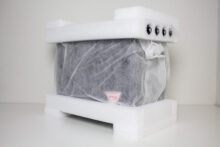
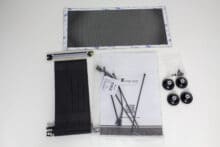

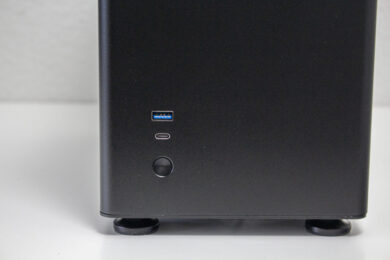
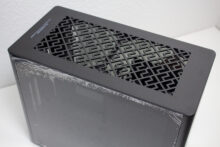
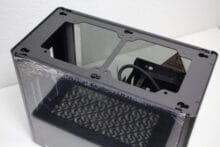
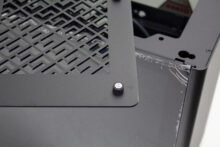
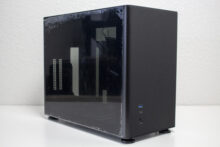
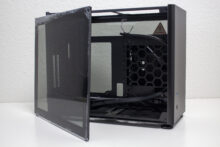
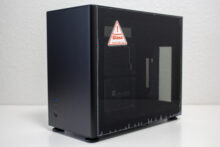
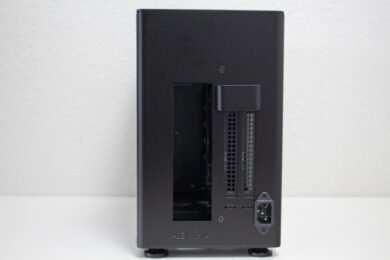
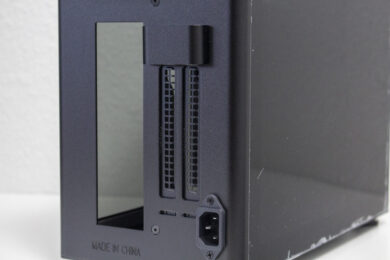


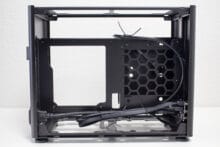


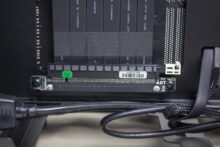
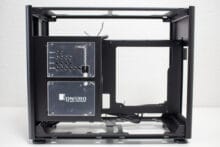
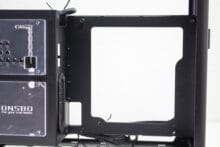



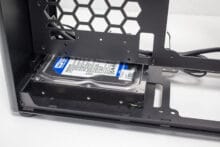

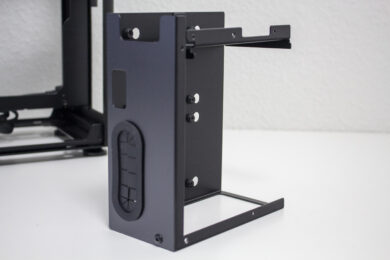



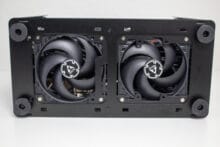
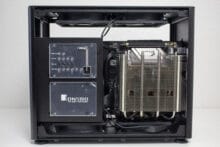
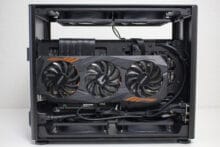

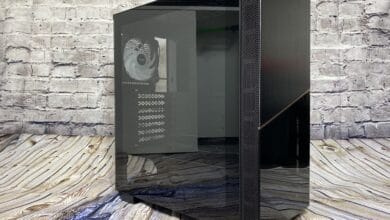

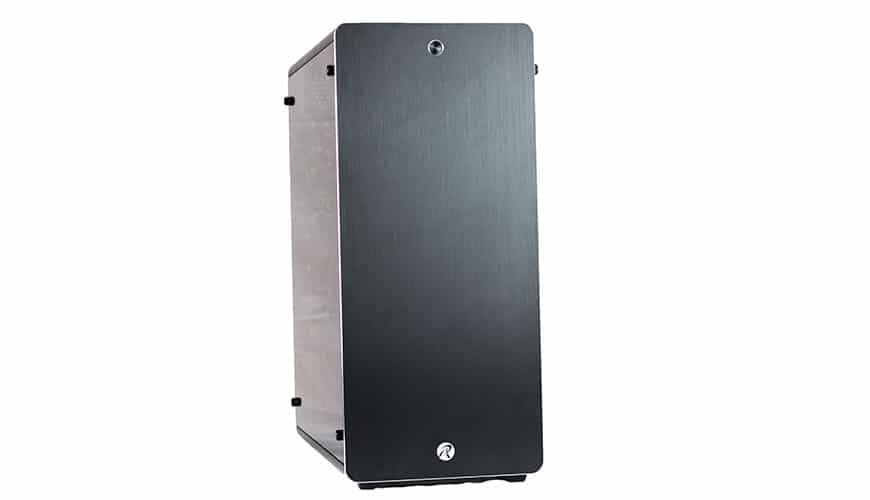
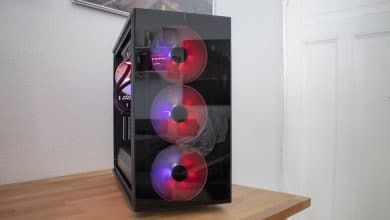
No replies yet
Neue Antworten laden...
Neues Mitglied
Beteilige dich an der Diskussion in der Basic Tutorials Community →